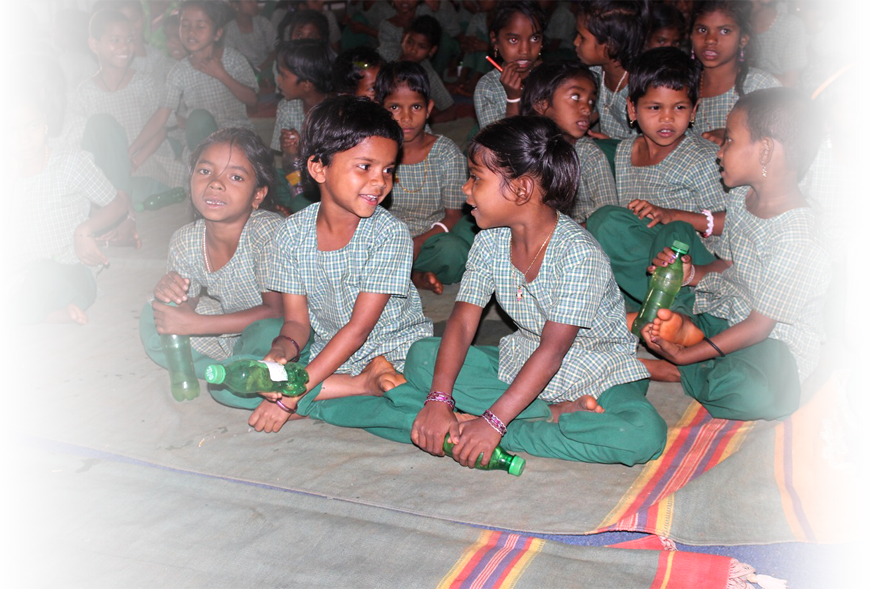RIGHT TO WATER
India as a country, diverse in its landscape and topography, also stands differentiated by the amount of rainfall received and the presence of water bodies in an area. Precipitation annually varies from less than 100 mm in the desert of Rajasthan to more than 10000mm in the hills of Meghalaya. Because of geographical constraints only 60% of all available surface and ground water can be put to beneficial use in India. A key consideration in the utilisation of water resources must be the understanding that water is a key element of the bio-diversity and the ecosystem of any particular region. It is essential for the sustenance of all life forms and is also used for domestic and industrial purposes. The scarcity of fresh water, varying natural elements like flood and drought, growing concerns about climate change, development and planning of water projects , food security and economic benefits are all the mainstays of the country’s water policy. The Ministry of Water Resources drafts the National Water Policy of the Government of India. The first policy was released in 1987 and then reviewed and updated in 2002. The latest recommendations on the National Water Policy are still in draft format, submitted to the Ministry in 2012.
The current scenario of water resources and their management have given rise to several concerns, some of which are:
Increasing variation in availability of water caused by incidences of water related disasters such as floods and increased erosion.
Poor access to safe drinking water and water for sanitation and hygiene continues to be a problem.
Groundwater, though a community resource, continues to be perceived as individual property.
It is exploited inequitably and without any consideration for its sustainability.
Grossly inadequate maintenance of existing irrigation infrastructure results in wastage and under-utilization of available resources. There is a widening gap between irrigation potential created and utilized.
The National Water Policy of 2002 falls miles short of meeting such problems as priorities, and the State Water Policy of Odisha too, remains nothing but a clone of the national framework. For example, a key principle in the existing frameworks while planning development and management of water resources keep only the state’s need in mind, completely ignoring the needs of local communities in particular. Moreover the Odisha State water policy measures the availability of surface water only by the method of river gauzing, which effectively leaves out the points between where the rain drops and run-offs originate to the point of gauzing. The groundwater availability also does not include the subsurface water available at shallow layers during rainy and winter seasons. There is a strong need for comprehensive assessment of water availability before planning major and medium projects, which might even necessitate the requirement for a large number of micro projects.
The Odisha State Water Policy is deficient in addressing flood and drought mitigation measures, which inextricably affect the food security and drinking water availability in the region. Rain-fed crops get severely affected during such calamities and there is a necessity to install appropriate watershed programmes for such tracts. There are several issues involved in the water resource development projects including environmental sustainability, appropriate resettlement and rehabilitation, public health, time and cost overruns, water logging, soil salinity, equitable water distribution and exploitation of ground water sources. The irrigation department continues to rely on past experiences to deal with the above issues, failing to adopt latest technology and multi-discplinary inputs to address them.
Water pricing, sanitation projects, urban water supply and sewage treatments all come under the scanner for being archaic in their perceptions of the 2002 Policy. With the effective implementation of subsidies and incentives as noted in the Draft Recommendation of 2012, it is possible to ensure optimum utilzation of water and encourage recovery of pollutants, recycling of water and resolve differences between multiple stakeholders. The draft committee also recommends a permanent Water Disputes Tribunal to be established at the centre to resolve disputes expeditiously. The topics that remain untouched in the 2002 Policy, find space in the 2012 recommendations. However it is yet to be seen if the Government acts on them.
Climate change has also changed the dynamics of viewing the entire water framework. There is a need to enhance capabilities of local communities so they can adopt climate resilient technological options to increase the availability of water. Water conservation and management, along with evolving agricultural strategies, must be worked on by local communities, academicians, experts, CSOs and the government. Pollution of water source and water bodies only amplifies the problem of climate change, demanding all the stakeholders to take urgent measures to conserve and protect water bodies.
Water policy is critical in so many ways that it affects all spheres of functioning in a country- food security, economic development, power projects, drainage and sewage treatments, disaster mitigation, ecosystem management, etc. Our policy planners and governments have much to do to put in place a holistic and sustainable water framework.













